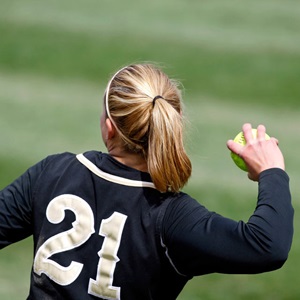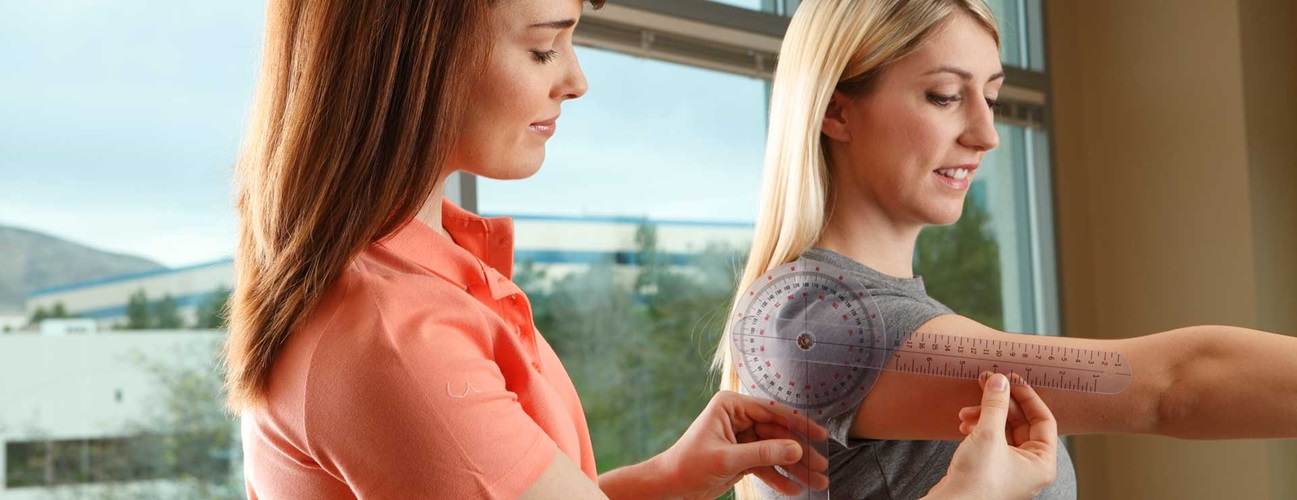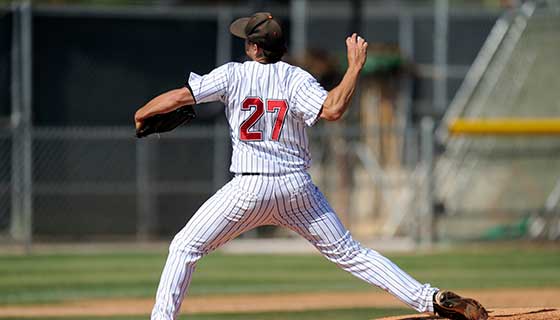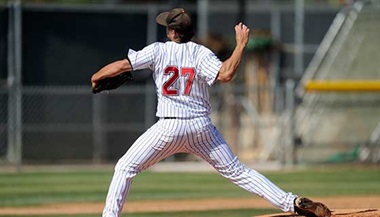Shoulder Labrum Tear
What You Need to Know
- The shoulder labrum is a thick piece of tissue attached to the rim of the shoulder socket that helps keep the ball of the joint in place.
- The labrum can tear a few different ways: 1) completely off the bone, 2) within or along the edge of the labrum, or 3) where the bicep tendon attaches.
- Diagnosing a labrum tear involves a physical examination and most likely an MRI, CT scan and/or arthroscopy of the shoulder.
- Treatment varies depending on type, severity and location of the labrum tear.
What is the labrum?
The labrum is a type of cartilage found in the shoulder joint. The shoulder is a ball-and-socket joint where the arm meets the body. The arm bone (humerus) forms a ball at the shoulder that meets the socket, which is part of the shoulder blade. These two bones are connected by ligaments — tough tissues forming tethers that hold the bones in relationship to each other.
There are two kinds of cartilage in the joint. The first type is the white cartilage on the ends of the bones (articular cartilage) which allows the bones to glide and move on each other. When this type of cartilage starts to wear out (a process called arthritis), the joint becomes painful and stiff. The labrum is a second kind of cartilage in the shoulder, which is distinctly different from the articular cartilage. This cartilage is more fibrous or rigid than the cartilage on the ends of the ball and socket. Also, this cartilage is also found only around the socket where it is attached.
What is the function of the labrum?
The labrum has two functions. The first is to deepen the socket so that the ball stays in place. Picture the shoulder joint as a beach ball on a dinner plate. The ball of the humerus (the “beach ball”) is much larger than the flat socket (the “dinner plate”). The ligaments are the tethers that go from bone to bone and hold them together to help keep the ball in the socket. The other way the ball is kept in the socket is the labrum.
The labrum is a thick tissue or type of cartilage that is attached to the rim of the socket and essentially forms a bumper that deepens the socket and helps keep the ball in place. In individuals where the labrum is too small or is torn due to an injury, the ball may slide part of the way out of the socket (subluxation) or all the way out of the socket (dislocation). The labrum goes all the way around the socket and in most areas is firmly attached to the bone of the socket. In some areas it is not firmly attached. Only recently have specialists determined which parts are normal and which parts reflect tearing of the labrum.
The second function of the labrum is as an attachment of other structures or tissues around the joint. For example, the ligaments that help hold the joint together attach to the labrum in certain key locations. If there is an injury to the shoulder that tears the ligaments, sometimes the labrum is pulled off of the rim of the bone as well.
This injury usually involves a subluxation or dislocation of the shoulder and is usually due to trauma. The ball of the shoulder can dislocate toward the front of the shoulder (an anterior dislocation) or it can go out the back of the shoulder (called a posterior dislocation). In either case the labrum can be torn off of the bone. Usually when this happens the labrum does not heal back in the right location. Whether the joint continues to be unstable depends upon many factors.
The other structure that attaches to the labrum is the tendon of the biceps muscle. The biceps muscle is the muscle on the front of the arm which gets firm with bending the elbow. While this muscle is quite large, it turns into a small tendon about the size of a pencil that attaches inside the shoulder joint. At the other end of the muscle is a large tendon that attaches beyond the elbow in the forearm. The portion that attaches in the shoulder actually goes through a small hole in the rotator cuff tendons designed specifically for that tendon.
Once inside the joint, the tendon is attached in part to the bone near the socket and in part to the labrum at the top of the joint. This tendon can get torn where it attaches to the bone, where it attaches to the labrum or at both locations.
SLAP Tear Prevention Tips for Baseball and Softball Players

A SLAP tear can be a serious injury no matter your age or professional level. The majority of SLAP tears don’t happen in one day and usually result from repetitive trauma inside the shoulder.
Sports medicine specialist John Wilckens, M.D. explains the origin of SLAP tears and what players, parents and coaches can do to prevent this injury.
What is a labrum tear?
A labrum tear can take several forms, and it is very easy to confuse these types. As a result, it is important that you discuss with your physician exactly what type of tear you have. The first type of tear is one where the labrum is torn completely off of the bone. This is usually associated with an injury to the shoulder in which the shoulder has subluxated or dislocated. Sometimes this type of tear occurs and the individual does not realize that the shoulder has slid out of the socket.
The second type of labrum tear is tearing within the substance of the labrum itself. The edge of the labrum over time may get frayed so that the edge is not smooth. This type of tearing is quite common and rarely causes symptoms. It is seen frequently in the shoulder as people get older (over 40 years of age). Sometimes the labrum may have a large tear where a portion of the labrum gets into the joint and causes clicking and catching as the ball moves around in the socket. This type of tear is very rare, and most labrum tears do not cause these symptoms.
A third type of labrum tear is in the area where the biceps tendon attaches to the upper end of the socket. The socket can be divided into four regions: anterior (front), posterior (back), superior (the upper end near your head) or inferior (the lower end, which is toward the elbow).
The biceps tendon attaches at the superior end, where it blends in with the labrum. The labrum runs from there around the joint, both in an anterior and in a posterior direction. Due to injury in this area where the biceps tendon attaches, the labrum also can get injured. The injury in this area can be mild or it can be severe. Because the injury typically involves the biceps tendon and the labrum, because it is at the superior end of the socket and because it can affect the labrum attachments anterior and posterior to where the biceps attaches in this region, the acronym or abbreviation for this injury is a SLAP lesion. This stands for an injury that is superior labrum anterior and posterior.
There have been several grading systems or classification systems of this injury. In a lesser injury, the labrum is only partially detached in this area. In a more severe injury, the whole labrum is pulled off of the bone along with the biceps tendon. The most common classification divides SLAP lesions into four types.
How is a diagnosis of a labrum tear made?
Because this cartilage is deep in the shoulder, it is very difficult to make the diagnosis of a torn labrum upon physical examination. There are several tests that the physician can perform that may indicate a torn labrum, but these tests are not always accurate. The other problem is that labrum tears take different forms as described above, and certain tests will detect one kind of tear but not another. Some physicians feel very confident that they can make the diagnosis of a labral tear upon physical examination, but this is controversial. There are not many scientific studies that show that physical examination is reliable for making the diagnosis of a labral tear. As a result of this uncertainty, other studies can be done to confirm the diagnosis if it is suspected.
The best tests available to make the diagnosis of a labral tear are magnetic resonance imaging (MRI) scans or a test called a CT-arthrogram (the latter is a CAT scan preceded by an arthrogram where dye is injected into the shoulder). Both of these tests are relatively good at defining a labrum tear due to a subluxation or dislocation, but they are only around 80 percent to 85 percent accurate. For that reason, some physicians believe that tests are not always needed if the diagnosis of subluxation or dislocation can be made by history and physical examination. Neither of those tests is currently very good at making the diagnosis of a SLAP lesion. This area is very complex and it is difficult to reliably get good pictures of this area with MRI.
However, if the MRI definitely shows a tear then frequently it will be present. The problem is that the MRI may miss smaller tears and cannot reliably make the diagnosis in larger tears of the labrum.
The best way to make the diagnosis of labrum tearing is with arthroscopy of the shoulder. Unfortunately this is an operative procedure and requires some form of anesthesia. Making the diagnosis also takes some experience on the part of the surgeon, since the anatomy of the inside of the shoulder can be quite complex. The relationship between labrum tears and symptoms has not been totally figured out, so it is not clearly known which ones should be repaired and which ones can be left alone.
What is the treatment for labrum tears?
The treatment depends upon which kind of tear there is in the labrum. Tears that are due to instability of the shoulder, either subluxation or dislocations, require that the labrum be reattached to the rim of the socket. This can be done with an incision on the front of the shoulder, or it can be done with arthroscopic techniques through smaller incisions. There are advantages and disadvantages of each approach. At this institution we favor an open operation with an incision until arthroscopic techniques become more perfected.
If the labrum is frayed, usually no treatment is necessary since it doesn’t usually cause symptoms. However, if there is a large tear of the labrum, the torn part should either be cut out and trimmed, or it should be repaired. Which treatment is used depends upon where the tear is located and how big it is. This type of tear requiring repair without instability of the shoulder is rare.
Tears of the labrum near the biceps tendon attachment (SLAP lesions) may be just trimmed or may need to be reattached to the top of the socket. The best way to do this is with arthroscopic surgery since this area is difficult to reach with an open operation through a large incision. Using the arthroscope and small incisions for other instruments, the labrum can be reattached to the rim of the socket using either sutures or tacks.
How is the recovery from labrum surgery?
The recovery depends upon many factors, such as where the tear was located, how severe it was and how good the surgical repair was. It is believed that it takes at least four to six weeks for the labrum to reattach itself to the rim of the bone, and probably another four to six weeks to get strong. Once the labrum has healed to the rim of the bone, it should see stress very gradually so that it can gather strength. It is important not to reinjure it while it is healing.
How much motion and strengthening of the arm is allowed after surgery depends upon many factors, and it is up to the surgeon to let you know your limitations and how fast to progress. Because of the variability in the injury and the type of repair done, it is difficult to predict how soon someone can to return to sports and activities after the repair. The type of sport also is important, since contact sports have a greater chance of injuring the labrum repair. However, a vast majority of patients have full function of the shoulder after labrum repair, and most patients can return to their previous level of sports with no or few restrictions.






